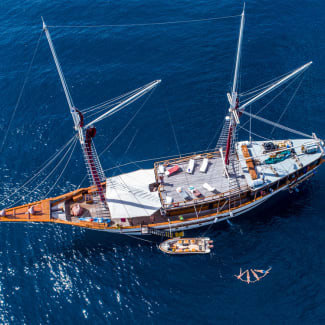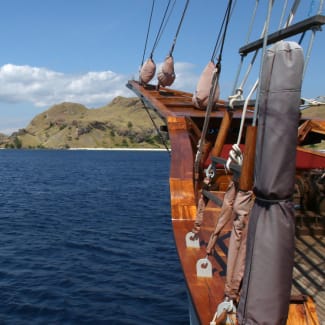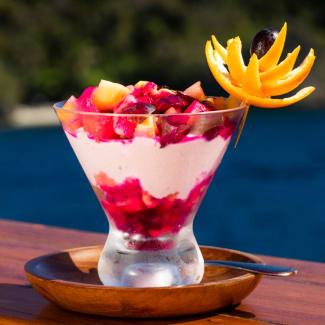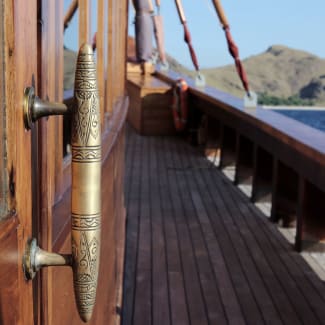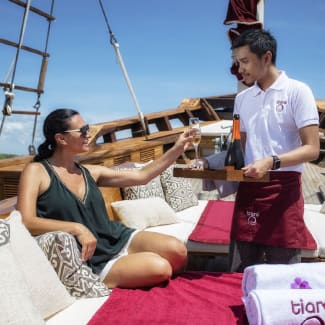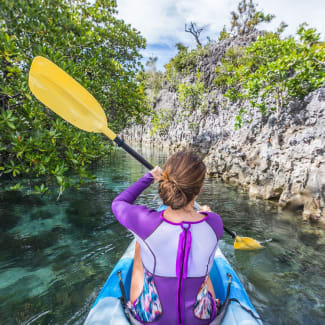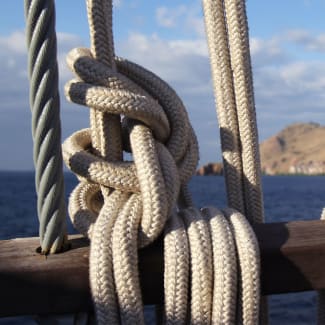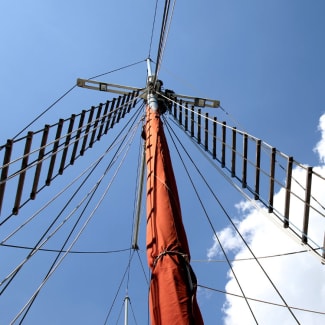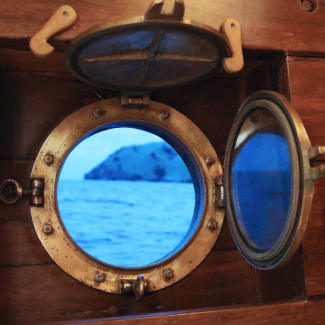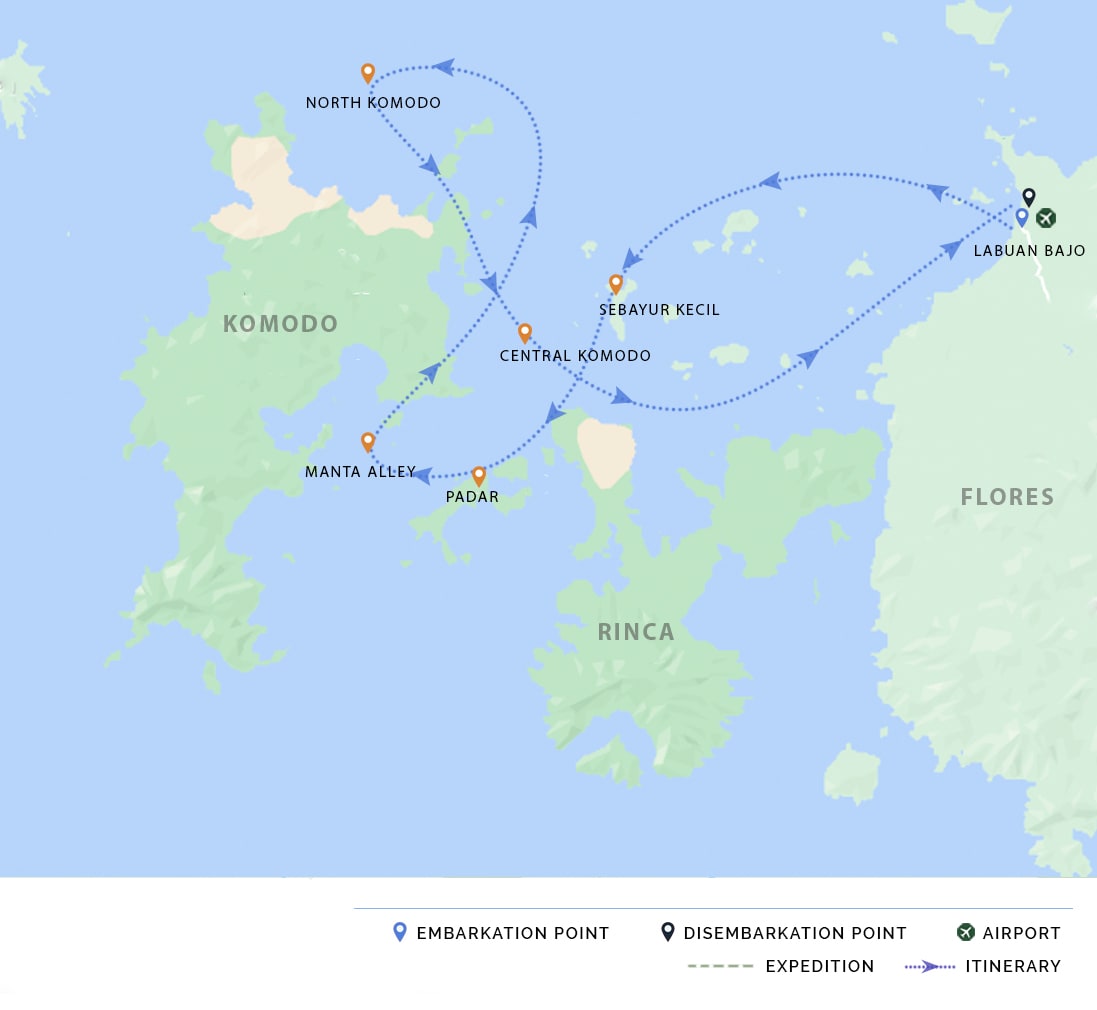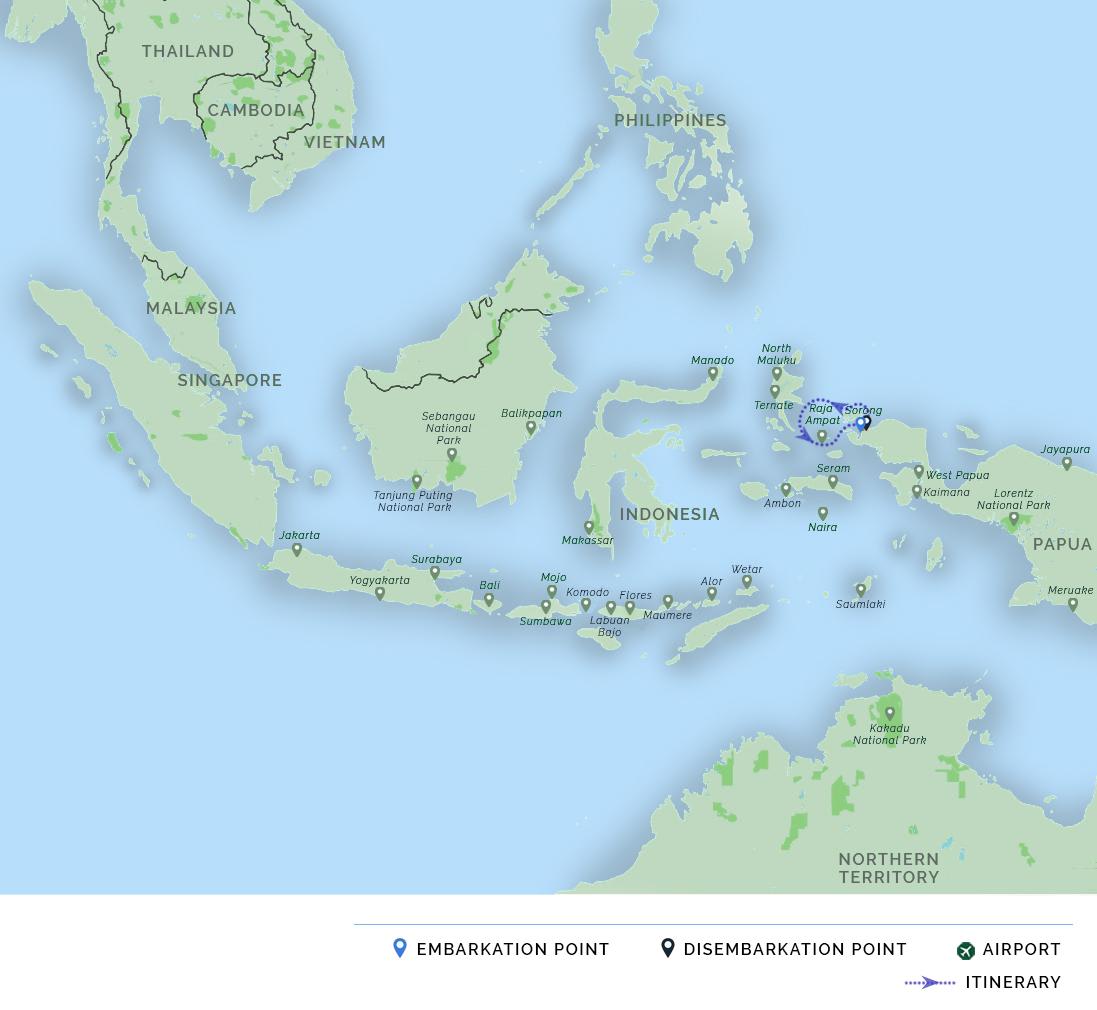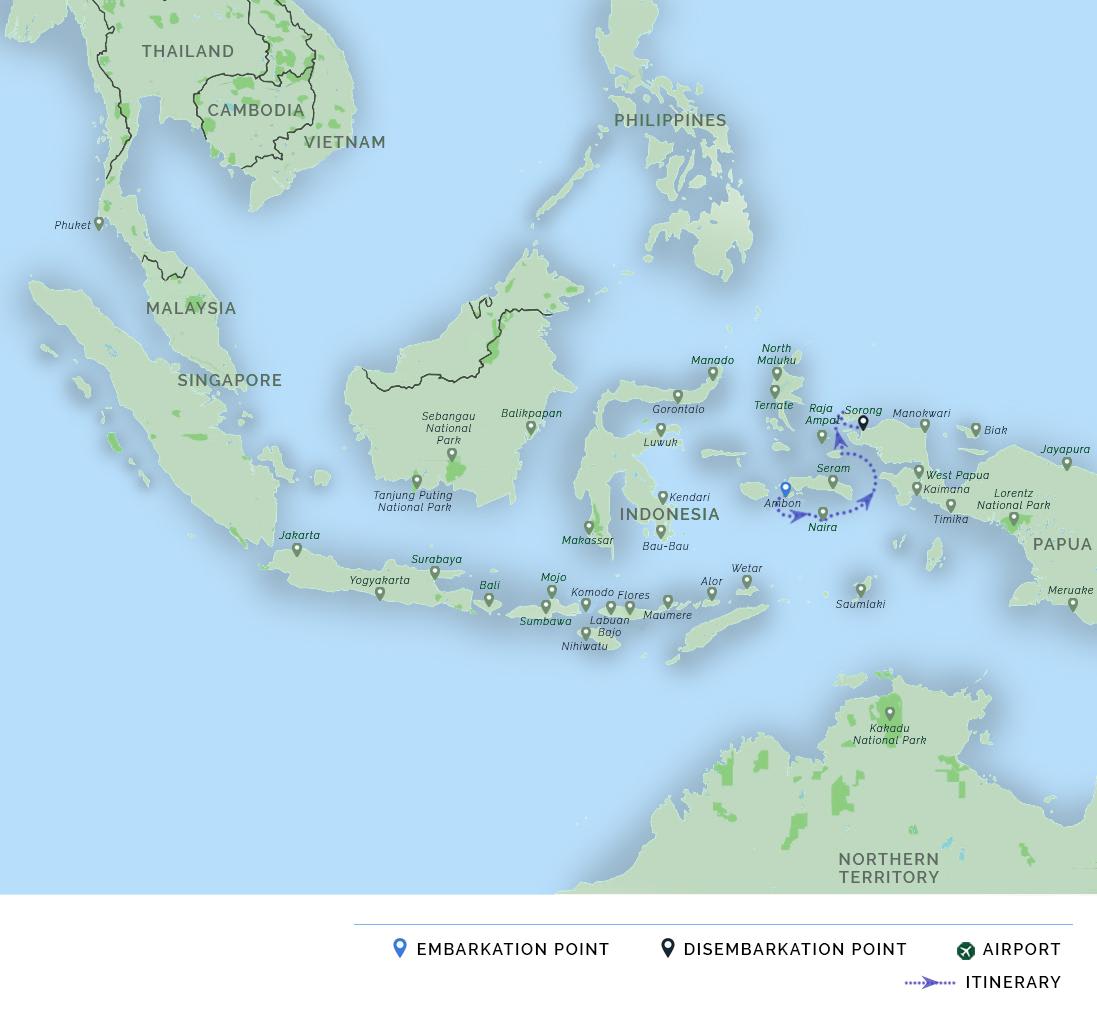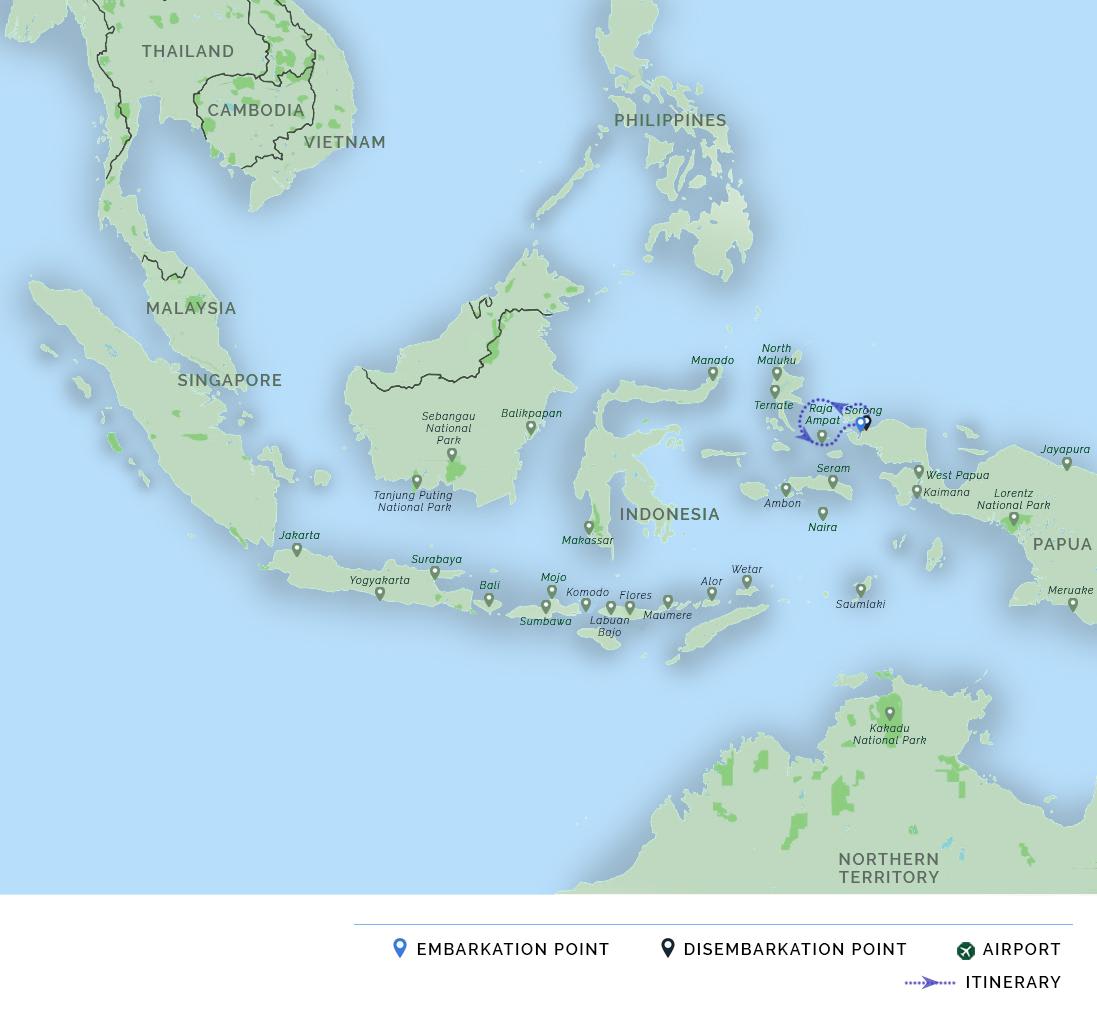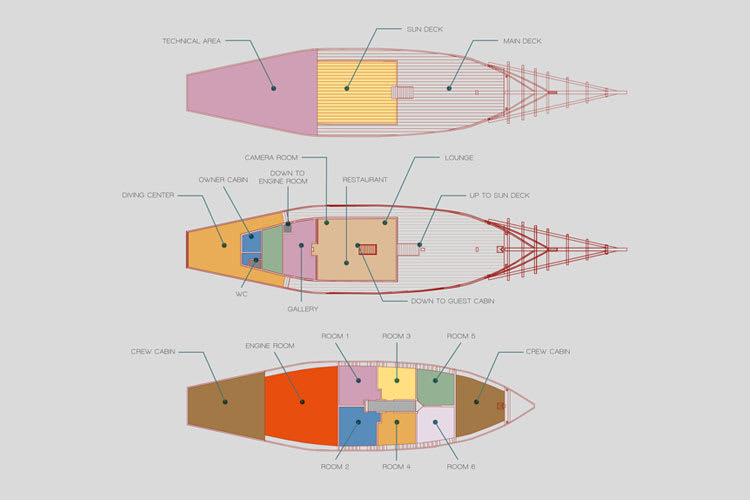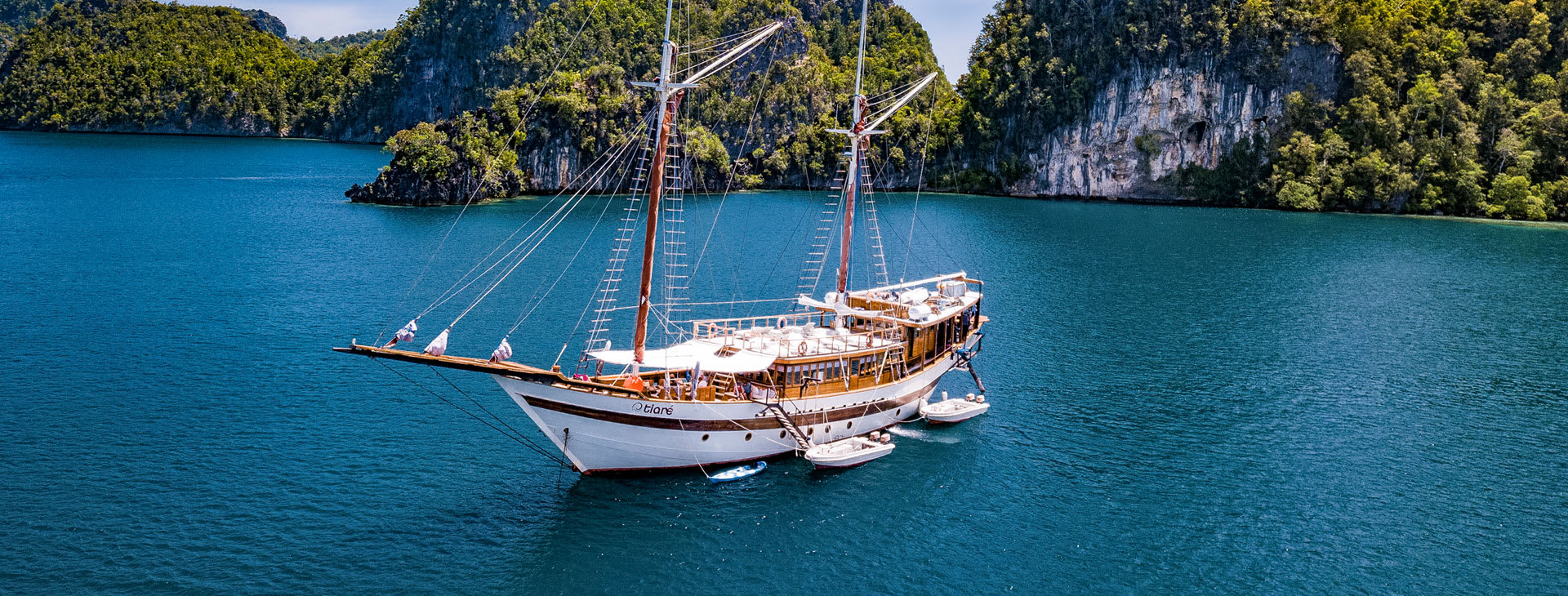
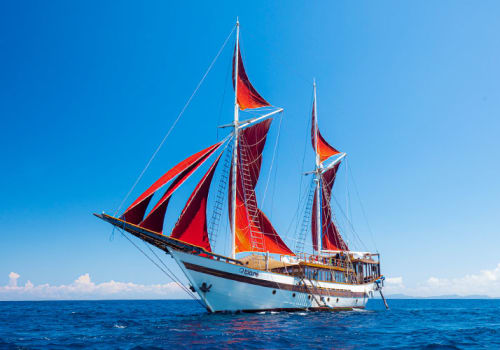
-
Adventure
-
Family
-
Diving
-
Solo
Overview
Built in 2016, the 150-ft traditional Phinisi boat, Tiaré, caters to just 14 guests. She offers year-round luxury dive cruises in eastern Indonesia, exploring the world-famous dive sites of the Komodo National Park, East Flores, Alor, the Forgotten Islands, the Banda Sea and Raja Ampat. Non-divers are also welcome and can enjoy snorkeling activities.
Life On Board
All indoor and outdoor living areas, decks and cabins are made with antique teak sustainably salvaged from traditional old Javanese houses. The six air-conditioned cabins are designed with your relaxation in mind. There are two triple cabins, which are spacious enough to accommodate two adults and one child, or three adults, with under-bed storage to ensure ease of movement within the cabin. The other four cabins, two twins and two doubles, accommodate two guests each. All have private en-suite bathrooms.
Meals aboard the Tiaré Cruise are prepared fresh and feature a mix of local gourmet cuisine and international dishes, served buffet style either in the indoor lounge or alfresco on the Main Deck. All-day snacks are available and you can look forward to at least one beach barbeque. All dietary requirements can be catered to with prior notice.
The large air-conditioned indoor lounge features cushioned couches and tables, perfect for socializing and swapping stories with your fellow divers. Here, you’ll find a stereo system for your entertainment, a full stock of beverages, both hot and cold, and a bar stocked with imported wines, beers and spirits.
Ideal for underwater photographers, a camera table with plenty of shelving, multiple charging stations, a DVD player, and TV screen for photo playback, is available. In addition to the indoor lounge, the outdoor bow lounge is a space to enjoy and experience the freedom of being at sea. Relax in the Indonesian sunshine or under the stars on comfortable loungers and couches.
Diving With Tiaré
On the dedicated Diving Deck, you will have your own personal area to set up your equipment. Hot water showers are available here to warm you up after a night dive. Tiaré’s highly qualified team is on hand to help set up and transfer your equipment to the waiting tender dive boats, and after a dive your wetsuits will be washed and dried for you.
All on-board instrumentation, engine, generators, Nitrox, plumbing, fire detection and electric systems are top-of-the-range imported products. PADI standards are adhered to at all times, and each diver is fitted with an electronic rescue and location system, and a waterproof pocket with a cell and whistle.
The Tiaré Cruise will take you to some of the Indonesia’s most incredible dive sites, where ‒ as a consequence of the immense tidal changes from the North Pacific Ocean and the fierce currents and heavy swells of the powerful Indian Ocean ‒ the nutrient-rich water has created a magnificent ecosystem flourishing with more than six thousand species of life. The Tiaré Liveaboard Indonesia is best enjoyed with your partner, family, friends, or with the newfound friends you’ll meet on board.
Itineraries & Prices
All itineraries are subject to change due to seasonal weather conditions (and resultant variations in river and tributary water levels) affecting accessibility to locations. Thus navigation routes, times and excursions may need to be modified at the cruise captain’s or your guide's discretion.
Embarkation
Dive at Sebayur Kecil
This site is suitable for divers of all levels, with good visibility and no risk of strong currents. Marine life is abundant here, including schools of bump head parrotfish and fusiliers, leaf scorpionfish and stonefish, morays, batfish, damselfish, butterflyfish, anthias, giant spiny lobster, De Beaufort's flathead, gobies, shrimps, large cuttlefish, octopus, ghost pipefish, frogfish, and electric clams. Sometimes, manta rays, spotted eagle rays, white tip reef sharks, groups of giant trevally, coral trout, snappers, emperors, and giant sweetlips can also be seen. In the shallower waters, Sebayur Kecil provides a great site for beginners or those looking to refresh their skills.
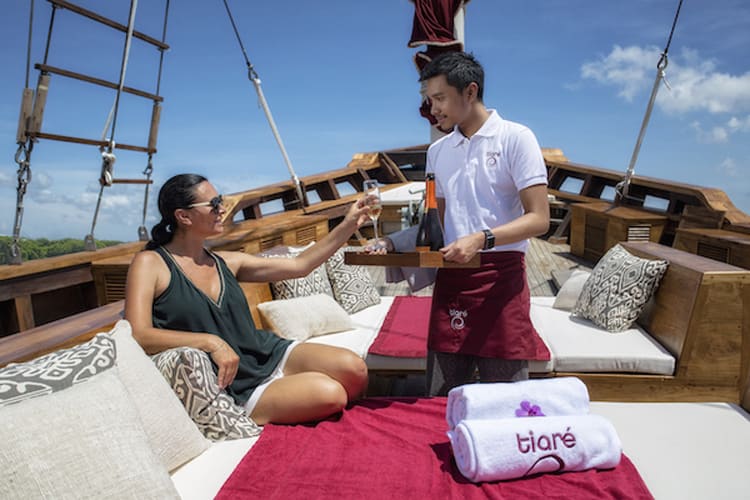
Padar Island
First Dive: Secret Garden
As the name suggests, this is an intriguing coral garden. You may encounter sweetlips, snappers, jackfish, and schools of Mobula rays.
Second Dive: Three Sisters
A superb wall dive on three submerged pinnacles. Red-toothed triggerfish tails protrude from the steep walls, alongside beautiful invertebrate-laden whip corals, soft corals, and abundant fish life.
Third Dive: Padar Beach
A shallow sloping coral garden offers an ideal hiding place for cuttlefish, octopus, and all manners of critters. Large trevallies patrol the reef with snappers and emperor fish following close behind. The sandy bottom is ideal for macro lovers. The wreck of a small fishing boat here is host to plentiful marine life.
Trekking at Padar Island
Padar is the third largest island within the Komodo National Park. It offers beautiful short treks and is a hotspot for photographers. The hike to the peak takes about 20-40 minutes. From this viewpoint, you will be rewarded with a jaw-dropping vista of a series of crescent-shaped bays and ribbons of sand.
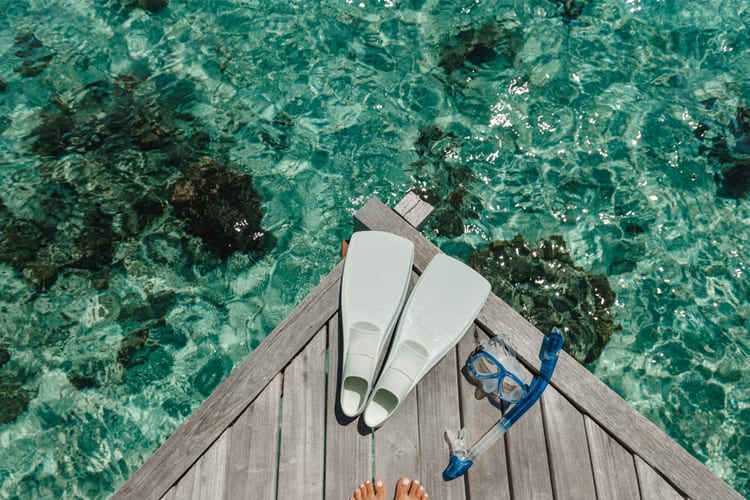
Manta Alley
First & Second Dives: Manta Alley
This is a breeding hotspot for manta rays, and you are highly likely to find them here. Under the surface is an “alley” of 30-50ft deep between some rocks, with a deeper section to the east down to 100ft. You may also find other large rays, big parrot fish, barracudas, schools of fusiliers, giant jackfish, turtles, whitetip sharks, and snappers here. There can be a strong current and the water is often a little chilly at this site.
Third & Fourth Dive: Pink Beach
The color of the sand on the gorgeous Pink Beach is caused by the broken red shells of an organism called foraminifera. This is the most frequently visited dive site in the park because the reef is so rich, and snorkeling is excellent from the beach. There is a particularly good dive in a small area around a rock that breaks the surface at low tide.
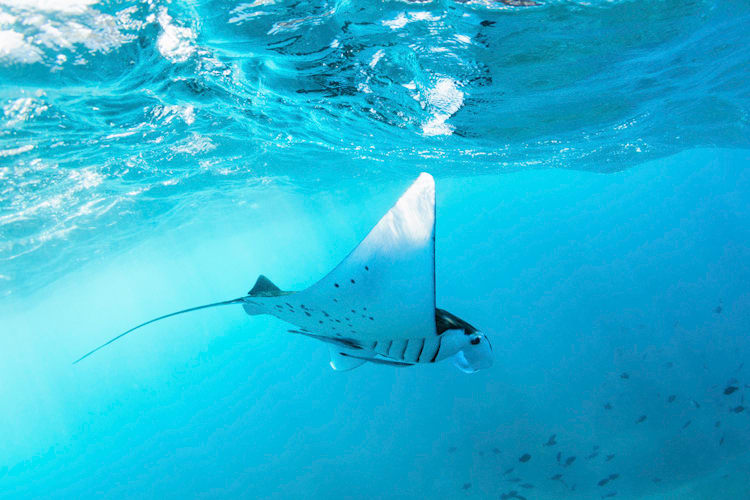
North Komodo
First Dive: Crystal Rock
Named for its clear waters, Crystal Rock is one of North Komodo’s gems. Here, a rocky pinnacle breaks the surface at low tide, displaying an array of soft and hard corals. It offers a very colorful dive, which is also prone to current. Expect to see trevally, jacks, sharks, mackerel, Napoleon wrasse, tuna, and even the occasional eagle ray.
Second Dive: Castle Rock
One of Komodo’s most iconic dive sites; the current is strong. Here, enormous schools of fusiliers, unicornfish, and bannerfish attract big predators, such as gray reef sharks, tunas, barracudas, giant trevally, and dolphins (early mornings). Underneath the table corals, inside the little cracks, or in the gorgonian fans, you’ll find a whole realm of tiny invertebrates including pygmy seahorses and blue-eyed crabs.
Third Dive: Shot Gun
This site lives up to its name. The water bottlenecks at the start of a narrow channel so hold tight and enjoy the ride as you get shot through the channel. Stick to the left if you can and you’ll find a complete contrast of diving conditions will be waiting for you, including a coral garden which is one of the best in Komodo.
Fourth Dive: Gili Lawa Darat Reef
A nice reef covered in hard and soft corals with swarms of schooling fish.
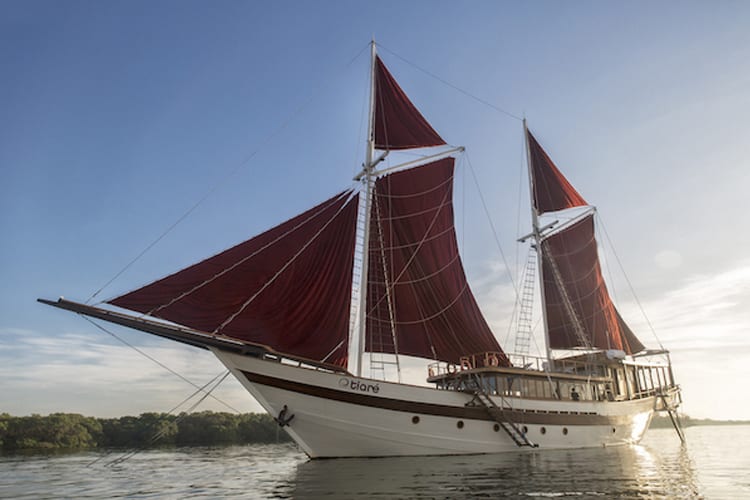
Central Komodo
Trekking with Komodo Dragons
Head ashore on a ranger-led nature trek in search of Komodo dragons, which are indigenous to this small group of islands. In this savannah-like setting of dry, rugged landscape, you will encounter, at a safe distance, these awe-inspiring giant lizards – Indonesia’s living dinosaurs. You may spot deer, wild boar, sulfur-crested cockatoos, butterflies, rare orchids, and jungle chickens among the strangler-fig trees and the distinctive lontar palms. From the top of the hills, the scenery is breathtaking.
First Dive: Karang Makassar aka Manta Point
Famous for sightings of up to 50 manta rays, Makassar is a mile-long drift dive located in the middle of the Lintah Strait. Due to strong currents, the site resembles a lunar landscape with vast craters and towering dunes. Mantas are not the only attraction, Makassar offers numerous species of sharks, schools of bump-head parrotfish, marble and eagle rays, and a surprising amount of macro life within the sparse yet vibrant coral bommies.
Second Dive: Batu Bolong
Batu Bolong (Hollow Rock) is one of the most famous dive sites in the park. Below the surface is an explosion of life, the rocky reefs drop to 230 feet, and attract big schools of fish − bright blue fusiliers, small reef fish of all sizes and colors with bluefin trevallies hunting amongst them. Every inch of the coral wall is alive, with an incredible diversity of color. Morays and octopuses hide in holes and tunnels, and lionfish and nudibranchs in cracks and crevices. Hawksbill turtles often come to graze and occasionally mantas or dolphins will glide in from the blue.
Third Dive: Wainilu
If it’s macro you are seeking, this is your place. Ribbon eels, Indian walkman, mandarin fish, frogfish, juvenile harlequin sweetlips, and countless species of nudibranch are all common sightings.
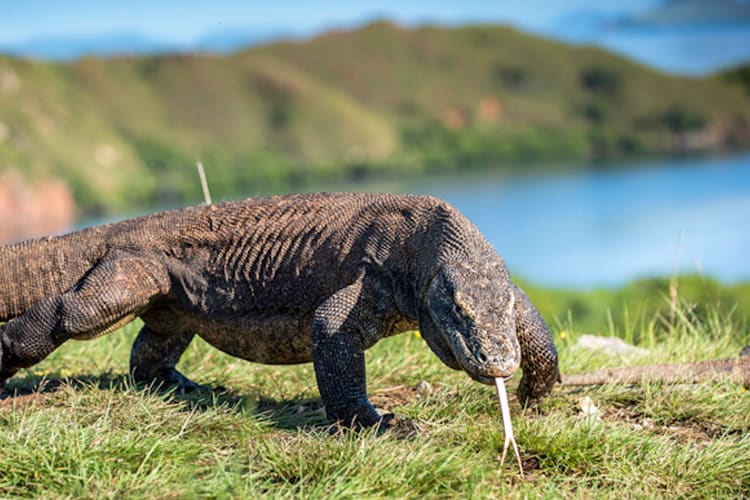
Central Komodo
First Dive: Mawan
Here, you’ll drift gently over some of Komodo’s most gorgeous coral gardens, often spotting parrotfish, clownfish, and blue-spotted stingrays, to name but a few.
Second Dive: Siaba Kecil
Siaba Kecil is the fastest drift dive in Komodo. The reef face is filled with small caves harboring angel fish, batfish, and sweetlips. Giant trevally school up above in the shallows. At the end of the dive, you are pushed up onto a shallow reef plateau, home to countless turtles and mandarin fish.
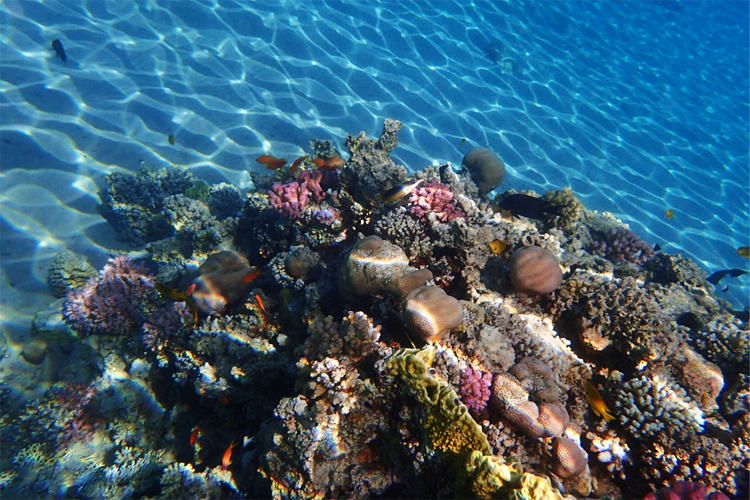
Disembarkation
Morning Cruise to Labuan Bajo. Prepare for disembarkation.
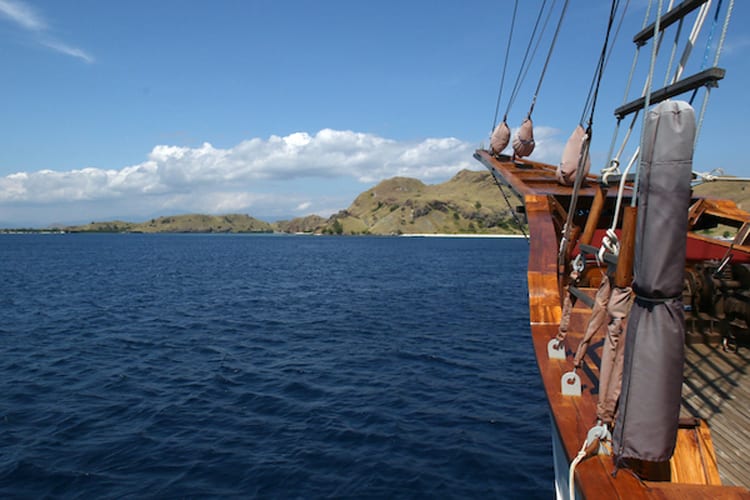
Embarkation
Crossing to Waisai (around 6 hours)
Overnight.
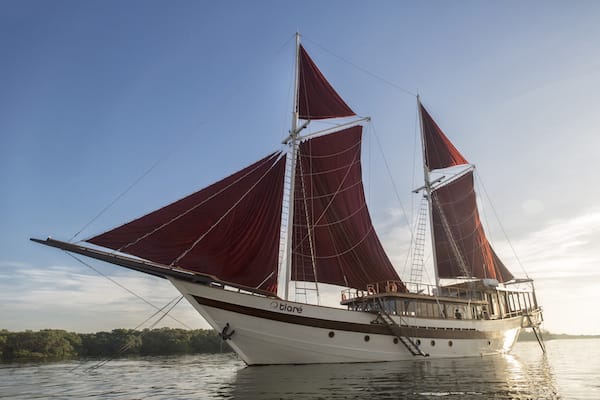
Waisai
Check Dive: Mioskun
This dive site is most famous for being the home of many yellow snapper, which you will see schooling and swirling around the coral column. If you head towards the bottom of the pinnacle, you will be able to see wobbegong sharks hiding in the cracks and caves. The gorgonian fans are where you will find sea horses and tiny little ornate crabs. Schools of fusiliers and trevallies will swim around you while you are looking at the coral structures. Peek into the crevices to spot shrimps, moray eels, and coral groupers.
Second Dive: Blue Magic
This site is an underwater pinnacle covered in spectacular corals ranging from gorgonian sea fans to colorful sponges, soft and hard corals, while bigger species swim in from the blue. This is a manta ray cleaning station, and you can simply choose a spot on the dive site to stay and let the majestic gliding rays circle right next to your face. The pinnacle also attracts massive schools of barracuda, plenty of octopus camouflaged among the sponge coral, and white tip, black tip and grey reef sharks, giant groupers, harlequin shrimp, honeycomb eels, wobbegong sharks, cuttlefish, pretty anthias and reef fish, nudibranch, pygmy seahorses, porcelain crabs and colorful clams.
Third Dive: Friwibonda
Great for macro underwater photographers, the site offers a huge variety of nudibranch species, sea dragons, blue-striped flagtail pipefish, pygmy seahorses, green sea turtles, giant napoleon wrasse, and Indian lionfish. There is also an abundant growth of corals and sea fans here that serve as homes for large groups of small fish.
Fourth Dive: Oh Yes!
Beautiful corals and loads of schooling fish. Some fusiliers, jacks, snappers, anthias can be seen here.

East Mansuar
First Dive: Cape Kri
Cape Kri is probably the most famous site in Raja Ampat, holding the record for the greatest number of species, 374, recorded on a single dive. The currents can be strong. Black tips and grey sharks are regular visitors here as they patrol the outer edges of the reef. You’ll see huge schools of sweet lips, groupers, giant trevally and snappers and even snoozing wobbegongs hidden away in caves. The coral coverage on this part of the island is also exquisite.
Second Dive: Otdima Reef
The current has a habit of running in different directions, creating an impressive haven for all types of schooling fish. The reef’s vast hard coral garden is very healthy and the sheer numbers of anthias fish within it are mind boggling. From sharks to eagle rays, mantas and dolphins, you never know what may be passing by.
Third Dive: Yenbuba Jetty
Yenbuba is a spectacular dive site with many different species of fish and a great chance for turtle enthusiasts to get up close to these wonderful creatures. It has schooling barracuda on the point and is home to fields of amazing staghorn and cabbage corals. This dive is protected, so it is great for beginners and those who have not been diving in a few years. If there are currents, they will go from left to right or vice versa, so you can enjoy a gentle drift with the current.
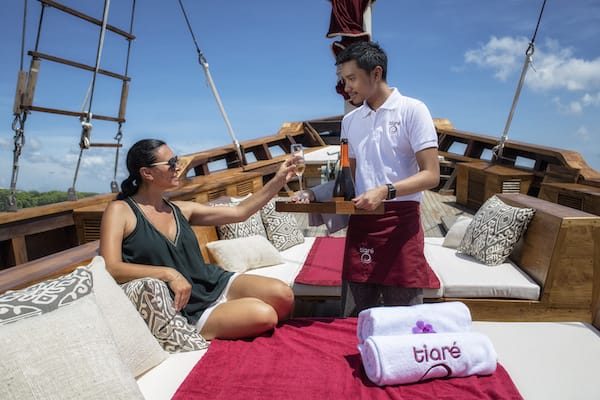
West Mansuar
First Dive: Manta Ridge
Manta Ridge has to be one of the most exhilarating dive sites in Raja Ampat. If you’ve ever dreamed of having a close encounter with a manta, then this is it. During the months of November-January the mantas come to feed at this famous cleaning station. All-black mantas are often seen here. Other marine life is abundant with large schools of fish including barracuda, sharks and sweetlips to name but a few. The soft and hard corals are also very healthy. The current rips across the wall in all directions and down currents are common. A reef hook is a must.
Second Dive: Lalosi
Lalosi is a sloping reef composed of a sandy bottom and many coral bommies. Lots of fish here as well as blacktip sharks and wobbegong sharks.
Third Dive: Sawandarek Jetty
This is a “must-visit” jetty because of the diversity you can find all in one area. One the way down you will encounter beautiful soft and hard corals surrounding metal Manta ray structures, were put in place many years ago for coral conservation. You will encounter larger than usual green turtles, giant clams and big schools of fusiliers and barracuda, and you’ll see a wide variety of macro life.
Fourth Dive: Arborek Jetty
Arborek is a small island village with a short jetty, underneath which you’ll find thousands to millions of schooling fish surrounding and enveloping you from every direction. Additionally, you may see cuttlefish, octopus, and both electric and giant clams. The site is quite shallow and therefore a great spot to practice your free diving or enjoy a snorkel.
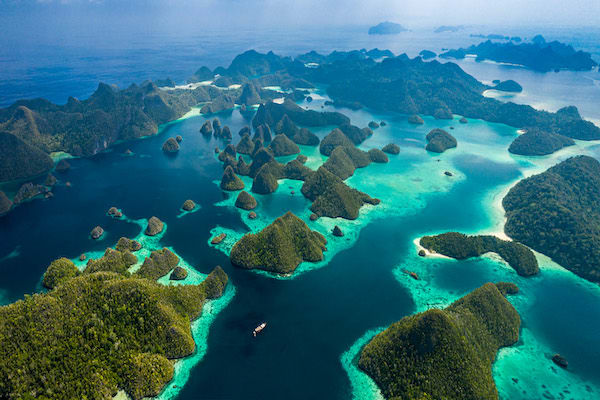
Pianemo
First Dive: My Reef
This is one of the more fishy dive sites of Pianemo, a long, submerged seamount full of life from the surface stretching down to 100 feet.
Second Dive: Melissa’s Garden
Prepare to be astounded by the large and colorful coral formations that are home to a wide variety of marine life at the beautiful Melissa’s Garden. Here, patches of hard corals create a smorgasbord of colors that seems to contain all forms of life. Wobbegong sharks, crocodile fish, and centuries’ old giant tridacna clams mingle with ubiquitous schools of fusiliers, anthias, and damsels. The reef attracts manta rays from May to October, along with great barracudas and many clownfish in the sprawling mass of anemones. Soft coral is also found here, making this an excellent site for macro divers and macro photographers.
Third Dive: Keruo Channel
This exciting drift dive takes you through a narrow channel with towering walls on either side and a chance to enjoy colorful sponges, black corals, sea whips, sea fans and table corals.
Optional Trekking: Pianemo Viewpoint
This isn’t a long trek, just 300 steps will take you up to a viewpoint from where you can see a plethora of tiny islands rising up out of crystal-clear turquoise water. One of the most impressive views here is looking out over Telaga Bintang or Star Lagoon. This is a beautiful star-shaped lagoon that makes for a gorgeous backdrop to your photos.
Crossing to Misool (around 14 hours)
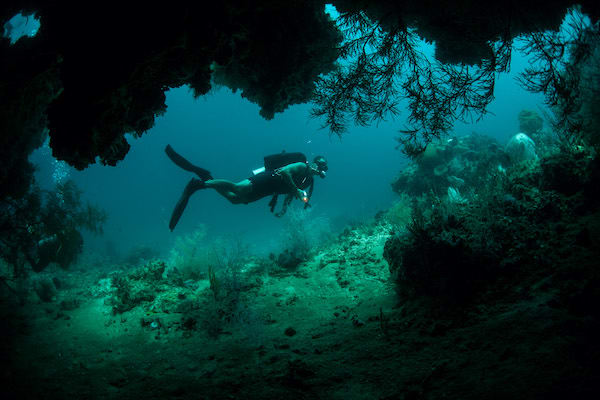
Masemta
Snorkeling at Jellyfish Lake, Lenmakana
The hidden Lake Lenmakana is reached via a short hike up a steep limestone cliffside. Despite the arduous journey, once on the top of the cliff, the view down into this turquoise lake and the treasures found within are well worth it. Here, you can snorkel among many thousands of stingless jellyfish, which have living algae within their bodies that, just like plants, photosynthesize in sunlight. The algae produce what is essentially a form of sugar, which the jellyfish metabolize, and this is how they gain the energy to propel and migrate through the water, grow and reproduce. The three species here are moon, golden and spotted medusa, and Cassiopeia (the upside-down jellyfish).
Snorkeling through the big Keramat Cave (aka Tomolo Cave)
A swim through Tomolol’s mysterious dome-topped cave is undoubtedly one of Raja Ampat’s most amazing activities. In this partially submerged cave, you can swim, snorkel or simply float, while gazing up at the cavernous grotto adorned with astonishing stalactites. If you’re feeling adventurous, you can swim or paddle through the dark waters to the other mouth of the cave.
Trekking to the Harfat Viewpoint
From Harfat Peak, you can view the beautiful Raja Ampat scenery. The topography is typical of ‘karst dissolution,’ featuring a great number of tiny islets whose bases have been eroded over time by the relentless motion of the tides. The crystal water is a vivid shade of turquoise, creating colorful mini atolls.
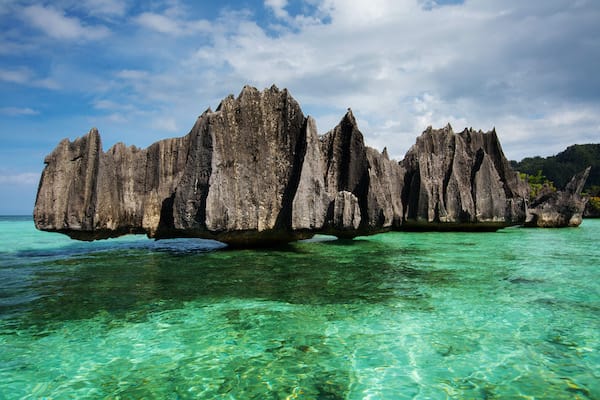
Wayilbatan
First Dive: Four Kings
This dive site has four pinnacles that shoot up out of the deep blue, rising from a depth of about 100 feet. The sides of the pinnacles are coated in soft corals, sea-fans and tunicates, and have become a colorful playground for just about every creature from schooling predatory fish such as barracuda and trevally, to coral grazing turtles with plenty of reef fish hiding in the creeks and crevices. This is also a great place to look for invertebrates, as they are masters of camouflage.
Second Dive: Gorgonian Passage
Many Gorgonian fans line the walls of this dive site, dominating the reef. The fans come in a rainbow of colors and if you look closely, you’ll spot pygmy seahorses, as well as many different nudibranchs, shrimps, crabs, lobsters, and moray eels. There are also many juvenile fish in the area.
Third Dive: Wedding Cake
Explore the steep wall at Wedding Cake. This site offers impressive marine diversity and topography.
Fourth Dive: Barracuda Rock
Bursting with Life, the massive boulders here are colonized by yellow and orange soft coral. You can look forward to some fish action and barracuda sightings.
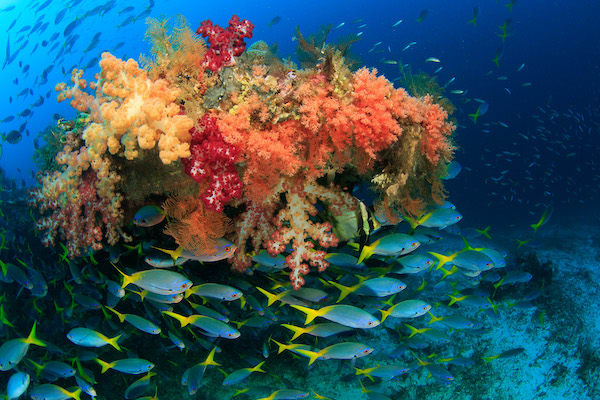
Warakaraket
First Dive: Karang Bayangan (aka Shadow Reef)
The bewitching Karang Bayangan is a hub of corals which include potato corals, soft corals, and brown leather corals. Black tip, white, and grey reef sharks are predominant here along with fusiliers, baby sharks, and jacks. In addition to these, parrot fish, oceanic triggerfish, octopus, and batfishes are all present in abundance, in fact, the number of fish is spectacular.
Second Dive: Boo West
A variety of marine creatures can be seen here such as grey reef sharks, napoleon wrasse, schools of pinnate batfish, unicornfish, blue dash fusiliers, yellow striped grunts and surgeonfish swarming around in large numbers, while less common sightings are banded sea kraits, ghost pipefish, leaf fish, and octopus lurking in the reefs.
Third Dive: Puri Pinnacle
This is a submerged reef that stands 23 feet below the surface. Its three pinnacles attract large schools of fusiliers, surgeon fish and hunting trevallies. It can offer some spectacular mobula ray action.
Snorkeling at Ranger Station Yuliet Besar
Here, you can snorkel among young black tip sharks swimming over the sand in the shallows.
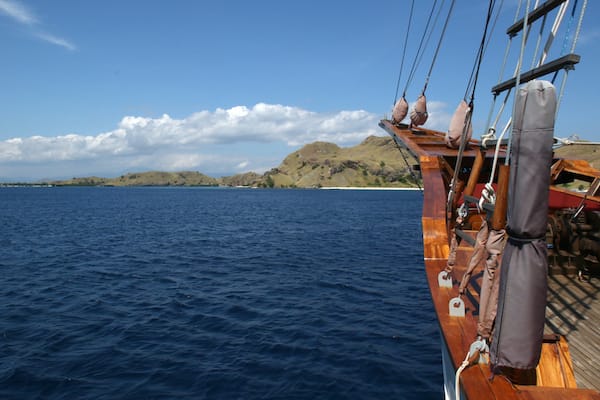
Boo
First Dive: Eagle’s Nest
This dive site offers superb visibility and impressive rock formations, abundant with schooling fish life and healthy reefs.
Second Dive: Boo Windows
One of Raja Ampat’s most iconic and most photographed dive sites, Boo Windows takes its name from the two swim-through holes in the rock. This dive site showcases the biodiversity of the Misool area with schooling fish, incredible corals and stunning underwater topography. The reef itself is thriving and healthy with plenty of soft and hard corals in a variety of awe-inspiring colors.
Third Dive: Boo East Point
This site is visited by the local reef manta population in season. Here the reef top is very shallow and perfect for watching the mantas being cleaned by small reef fish. Octopus can also be spotted around the rocky substrate.
Fourth Dive: Romeo
Many interesting macro subjects here, including pygmy seahorses, soft coral, decorator crabs, and many small commensal animals living with crinoids.
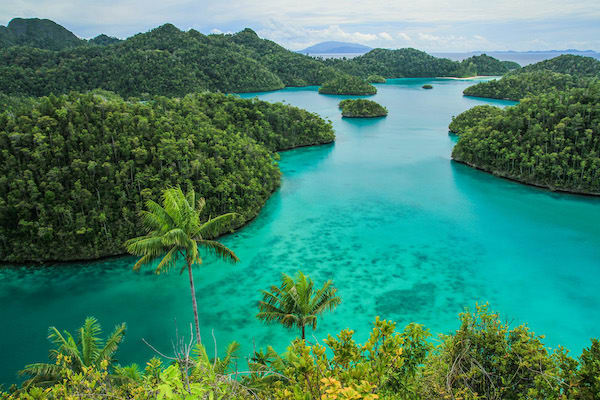
Daram
First Dive: Andiamo
Two small islands mark the site, but the typical dive starts at a small, submerged pinnacle teeming with fish life both large and small. You can then follow a deep ridge toward the two main islands of Andiamo while swimming past the resident group of yellowtail barracuda. Between the pinnacles is an impressive collection of soft corals and sea fans along with schools of damselfish and anthias. A long sloping ridge on the back side of the pinnacles is home to several large groupers.
Second Dive: Warna Bewarna (aka Candy Store)
Warna Berwarna means ‘colorful’ in Bahasa Indonesia and describes the abundant soft corals here, which are best experienced in the shallows.
Crossing to Sorong (around 12 hours)
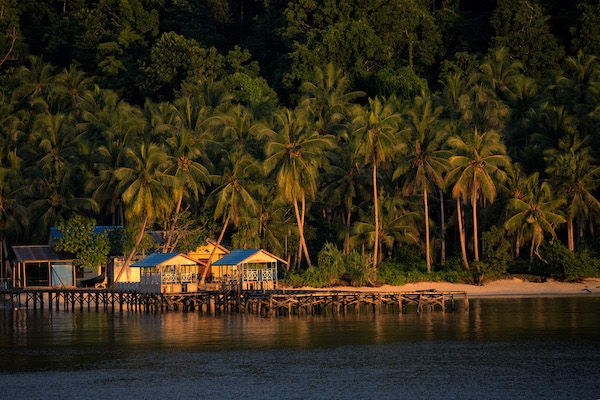
Disembarkation
Disembark at Sorong.
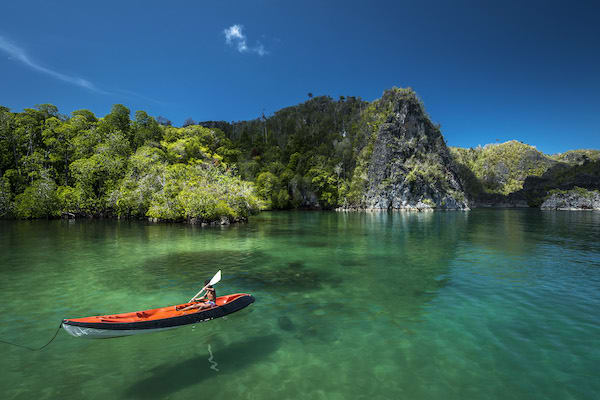
Embarkation
Boarding Tiare.
Check-in and check dive at Laha.

Pintu Kota
1st dive Pintu Kota
2nd Dive – Hukurila
3rd Dive – Batu Lompa
Crossing 13 hours to Suanggi.
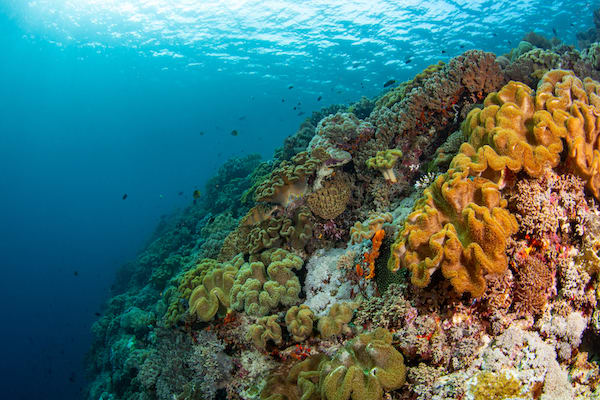
Suanggi
1st dive Suanggi I
2nd dive Suanggi II
3rd dive Batu Kapal
Visit Banda Neira Mandarin Dive
Overnight at Banda Neira
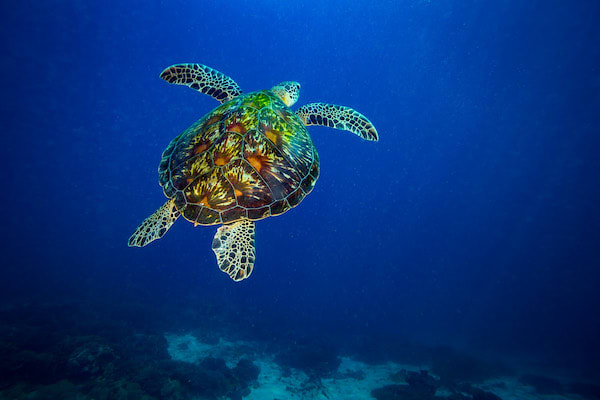
Hatta
1st Dive Pohon Miring
2nd Dive Hatta Wall
3rd Dive Karang Hatta
Crossing 11 hours to Koon
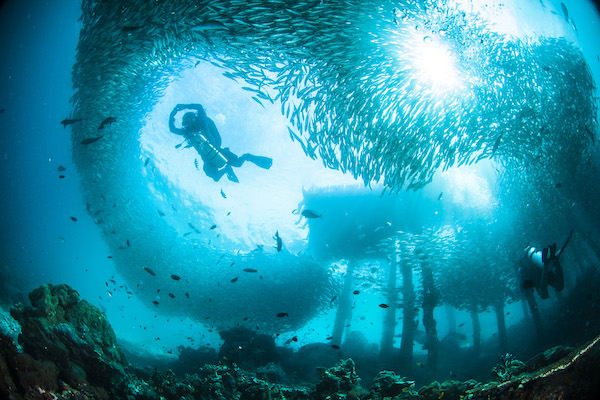
Koon
1st – 3rd dive Too many dive
Crossing to Pulau Pisang (11 hours)
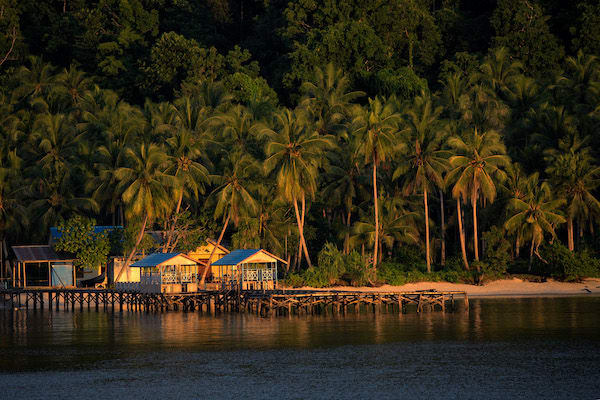
Pulau Pisang
1st dive – Tanjung Lampu
2nd dive – Channel
3rd dive – Pinnacle
Crossing to Misool 10 hours
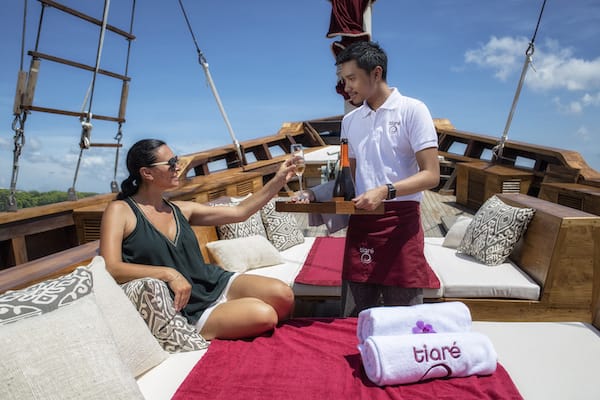
Misool
1st dive Karang Bayangan 2nd dive Boo Window
3rd dive Tank Rock
Night Dive at Barracuda Rock
Overnight at Wayil Batan
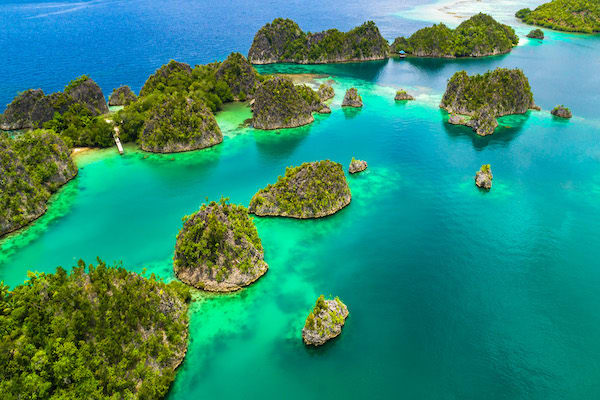
Wayil Batan
1st dive Four King
2nd dive Nudi Rock 3rd dive Farondi Cave
Visit Farondi Cave and Lagoon
Crossing to Piaynemo for 12 hours
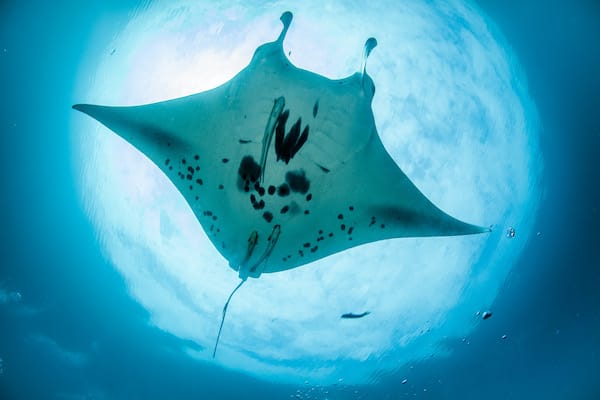
Piaynemo
1st dive My Reef
2nd dive Melissa Garden 3rd dive Channel
Visit Piaynemo Lagoon & Trekking Night Dive Gam Slope
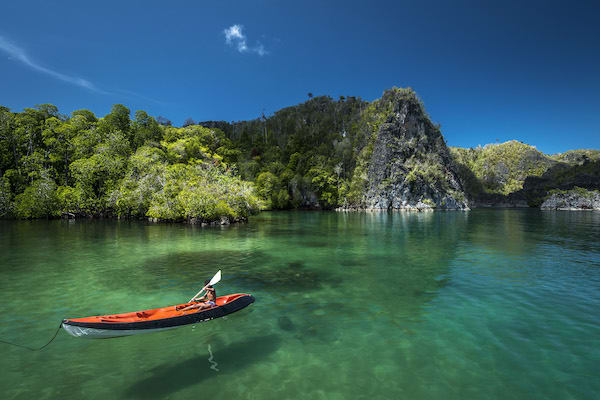
Arborek
1st dive Mayhem
2nd dive Manta Ridge 3rd dive Arborek
Visit Arborek Village
Night dive at Arborek Village Overnight at Yenbuba
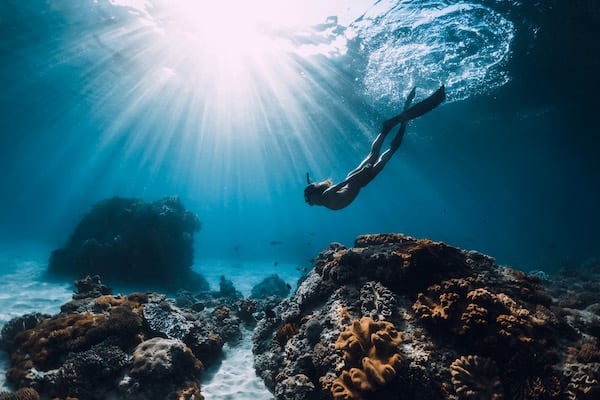
Cape Kri
1st Dive Cape Kri
2nd Dive Blue Magic
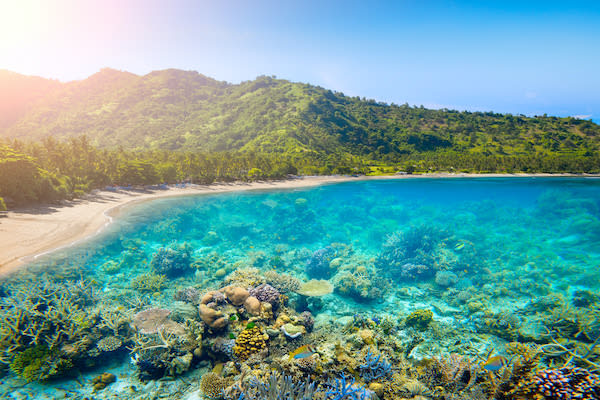
Disembarkation
Check out.
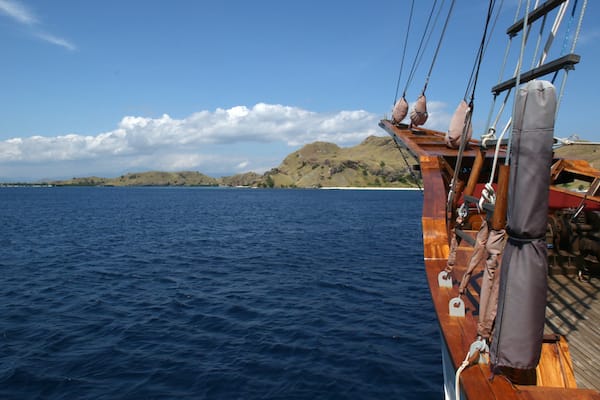
Embarkation
Crossing to Waisai (around 6 hours)
Overnight.
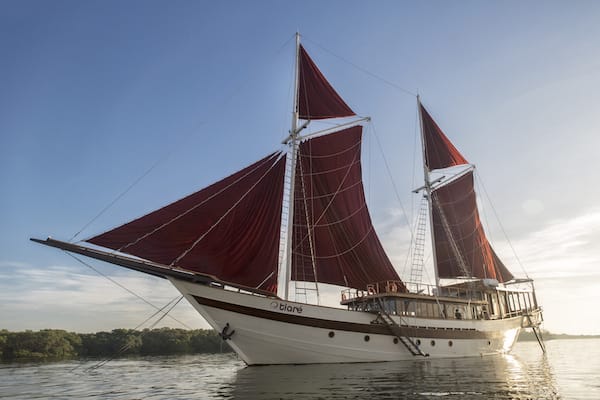
Waisai
Check Dive: Mioskun
This dive site is most famous for being the home of many yellow snapper, which you will see schooling and swirling around the coral column. If you head towards the bottom of the pinnacle, you will be able to see wobbegong sharks hiding in the cracks and caves. The gorgonian fans are where you will find sea horses and tiny little ornate crabs. Schools of fusiliers and trevallies will swim around you while you are looking at the coral structures. Peek into the crevices to spot shrimps, moray eels, and coral groupers.
Second Dive: Blue Magic
This site is an underwater pinnacle covered in spectacular corals ranging from gorgonian sea fans to colorful sponges, soft and hard corals, while bigger species swim in from the blue. This is a manta ray cleaning station, and you can simply choose a spot on the dive site to stay and let the majestic gliding rays circle right next to your face. The pinnacle also attracts massive schools of barracuda, plenty of octopus camouflaged among the sponge coral, and white tip, black tip and grey reef sharks, giant groupers, harlequin shrimp, honeycomb eels, wobbegong sharks, cuttlefish, pretty anthias and reef fish, nudibranch, pygmy seahorses, porcelain crabs and colorful clams.
Third Dive: Friwibonda
Great for macro underwater photographers, the site offers a huge variety of nudibranch species, sea dragons, blue-striped flagtail pipefish, pygmy seahorses, green sea turtles, giant napoleon wrasse, and Indian lionfish. There is also an abundant growth of corals and sea fans here that serve as homes for large groups of small fish.
Fourth Dive: Oh Yes!
Beautiful corals and loads of schooling fish. Some fusiliers, jacks, snappers, anthias can be seen here.
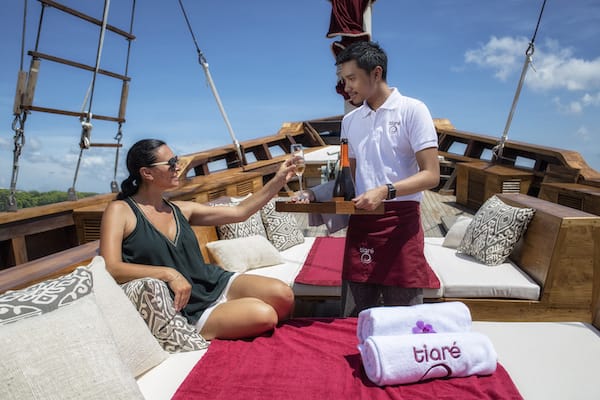
East Mansuar
First Dive: Cape Kri
Cape Kri is probably the most famous site in Raja Ampat, holding the record for the greatest number of species, 374, recorded on a single dive. The currents can be strong. Black tips and grey sharks are regular visitors here as they patrol the outer edges of the reef. You’ll see huge schools of sweet lips, groupers, giant trevally and snappers and even snoozing wobbegongs hidden away in caves. The coral coverage on this part of the island is also exquisite.
Second Dive: Otdima Reef
The current has a habit of running in different directions, creating an impressive haven for all types of schooling fish. The reef’s vast hard coral garden is very healthy and the sheer numbers of anthias fish within it are mind boggling. From sharks to eagle rays, mantas and dolphins, you never know what may be passing by.
Third Dive: Yenbuba Jetty
Yenbuba is a spectacular dive site with many different species of fish and a great chance for turtle enthusiasts to get up close to these wonderful creatures. It has schooling barracuda on the point and is home to fields of amazing staghorn and cabbage corals. This dive is protected, so it is great for beginners and those who have not been diving in a few years. If there are currents, they will go from left to right or vice versa, so you can enjoy a gentle drift with the current.
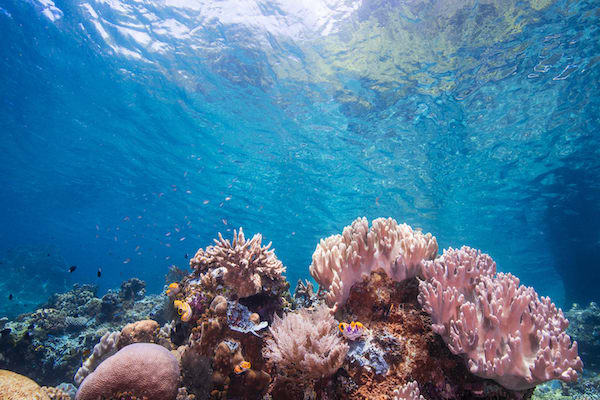
West Mansuar
First Dive: Manta Ridge
Manta Ridge has to be one of the most exhilarating dive sites in Raja Ampat. If you’ve ever dreamed of having a close encounter with a manta, then this is it. During the months of November-January the mantas come to feed at this famous cleaning station. All-black mantas are often seen here. Other marine life is abundant with large schools of fish including barracuda, sharks and sweetlips to name but a few. The soft and hard corals are also very healthy. The current rips across the wall in all directions and down currents are common. A reef hook is a must.
Second Dive: Lalosi
Lalosi is a sloping reef composed of a sandy bottom and many coral bommies. Lots of fish here as well as blacktip sharks and wobbegong sharks.
Third Dive: Sawandarek Jetty
This is a “must-visit” jetty because of the diversity you can find all in one area. One the way down you will encounter beautiful soft and hard corals surrounding metal Manta ray structures, were put in place many years ago for coral conservation. You will encounter larger than usual green turtles, giant clams and big schools of fusiliers and barracuda, and you’ll see a wide variety of macro life.
Fourth Dive: Arborek Jetty
Arborek is a small island village with a short jetty, underneath which you’ll find thousands to millions of schooling fish surrounding and enveloping you from every direction. Additionally, you may see cuttlefish, octopus, and both electric and giant clams. The site is quite shallow and therefore a great spot to practice your free diving or enjoy a snorkel.
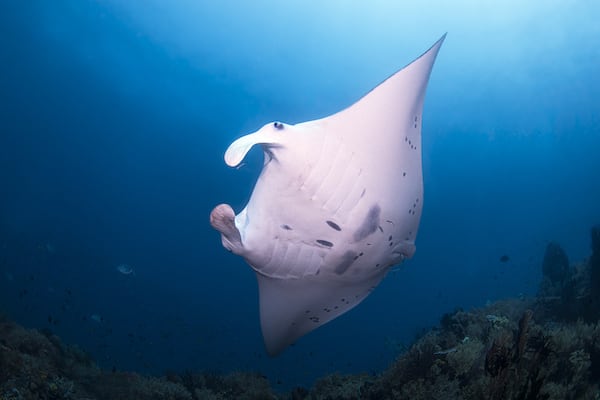
Pianemo
First Dive: My Reef
This is one of the more fishy dive sites of Pianemo, a long, submerged seamount full of life from the surface stretching down to 100 feet.
Second Dive: Melissa’s Garden
Prepare to be astounded by the large and colorful coral formations that are home to a wide variety of marine life at the beautiful Melissa’s Garden. Here, patches of hard corals create a smorgasbord of colors that seems to contain all forms of life. Wobbegong sharks, crocodile fish, and centuries’ old giant tridacna clams mingle with ubiquitous schools of fusiliers, anthias, and damsels. The reef attracts manta rays from May to October, along with great barracudas and many clownfish in the sprawling mass of anemones. Soft coral is also found here, making this an excellent site for macro divers and macro photographers.
Third Dive: Keruo Channel
This exciting drift dive takes you through a narrow channel with towering walls on either side and a chance to enjoy colorful sponges, black corals, sea whips, sea fans and table corals.
Optional Trekking: Pianemo Viewpoint
This isn’t a long trek, just 300 steps will take you up to a viewpoint from where you can see a plethora of tiny islands rising up out of crystal-clear turquoise water. One of the most impressive views here is looking out over Telaga Bintang or Star Lagoon. This is a beautiful star-shaped lagoon that makes for a gorgeous backdrop to your photos.
Crossing to Misool (around 14 hours)
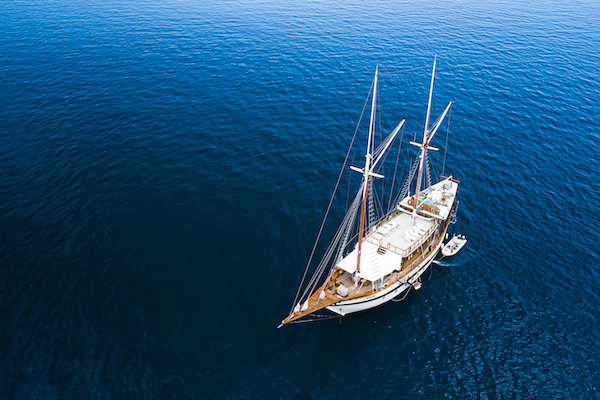
Masemta
Snorkeling at Jellyfish Lake, Lenmakana
The hidden Lake Lenmakana is reached via a short hike up a steep limestone cliffside. Despite the arduous journey, once on the top of the cliff, the view down into this turquoise lake and the treasures found within are well worth it. Here, you can snorkel among many thousands of stingless jellyfish, which have living algae within their bodies that, just like plants, photosynthesize in sunlight. The algae produce what is essentially a form of sugar, which the jellyfish metabolize, and this is how they gain the energy to propel and migrate through the water, grow and reproduce. The three species here are moon, golden and spotted medusa, and Cassiopeia (the upside-down jellyfish).
Snorkeling through the big Keramat Cave (aka Tomolo Cave)
A swim through Tomolol’s mysterious dome-topped cave is undoubtedly one of Raja Ampat’s most amazing activities. In this partially submerged cave, you can swim, snorkel or simply float, while gazing up at the cavernous grotto adorned with astonishing stalactites. If you’re feeling adventurous, you can swim or paddle through the dark waters to the other mouth of the cave.
Trekking to the Harfat Viewpoint
From Harfat Peak, you can view the beautiful Raja Ampat scenery. The topography is typical of ‘karst dissolution,’ featuring a great number of tiny islets whose bases have been eroded over time by the relentless motion of the tides. The crystal water is a vivid shade of turquoise, creating colorful mini atolls.
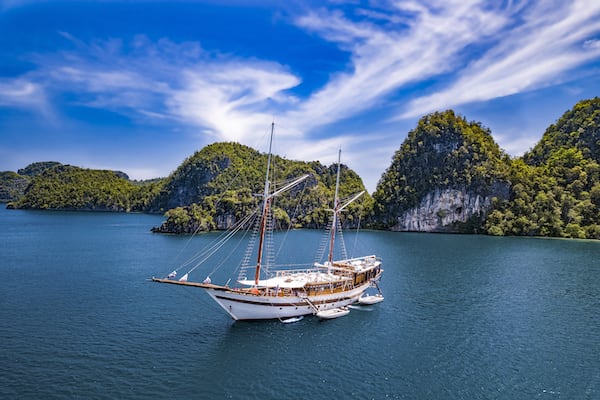
Wayilbatan
First Dive: Four Kings
This dive site has four pinnacles that shoot up out of the deep blue, rising from a depth of about 100 feet. The sides of the pinnacles are coated in soft corals, sea-fans and tunicates, and have become a colorful playground for just about every creature from schooling predatory fish such as barracuda and trevally, to coral grazing turtles with plenty of reef fish hiding in the creeks and crevices. This is also a great place to look for invertebrates, as they are masters of camouflage.
Second Dive: Gorgonian Passage
Many Gorgonian fans line the walls of this dive site, dominating the reef. The fans come in a rainbow of colors and if you look closely, you’ll spot pygmy seahorses, as well as many different nudibranchs, shrimps, crabs, lobsters, and moray eels. There are also many juvenile fish in the area.
Third Dive: Wedding Cake
Explore the steep wall at Wedding Cake. This site offers impressive marine diversity and topography.
Fourth Dive: Barracuda Rock
Bursting with Life, the massive boulders here are colonized by yellow and orange soft coral. You can look forward to some fish action and barracuda sightings.
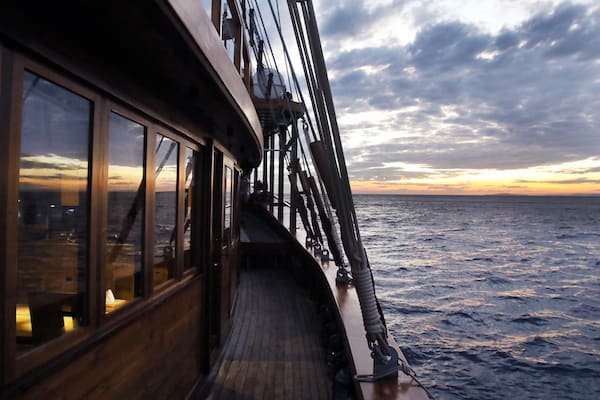
Fiabacet
First Dive: Nudi Rock
You will understand this name when you look on the topside of the rock. The submerged east point of Nudi Rock is undoubtedly one of the top dives in Raja Ampat, reminiscent of a Garden of Eden featuring an underwater kaleidoscope of soft corals and sea fans. An outstanding hard coral garden dominates the shallows on the southern side. You’ll probably see snapper, grouper, napoleon wrasse and turtles.
Second Dive: Tank Rock
On the west, a submerged ridge connects Tank Rock to Nudi Rock, and with favorable conditions, it is possible to dive all the way to Fiabacet's middle island. There are three pinnacles to the east and at times the swirling fish around these spires are so thick that it is difficult to see the reef. The soft corals are dense with aggregations of anthias and damselfish. You may also see pygmy seahorses, flatworms and nudibranchs as well as decorator crabs, harlequin shrimps, orangutan crabs, reef sharks, devil rays, crocodile fish and blue sea dragons.
Third Dive: Whale Rock
Hardly a spot on this substrate is left uncovered by sea fans and magnificent soft corals. Fish life includes barracudas, trevally hunting through thick schools of baitfish, schooling bannerfish, juvenile fish, and nudibranch.
Fourth Dive: Juliet
This mushroom-shaped rock has a nice overhanging wall, which hosts the tiny Denise pygmy seahorse as well as a knobbly variant known as the Santa Claus pygmy seahorse. Cephalopods of all shapes and sizes can be sighted, from tiny piglet squid to large reef cuttlefish, octopus, decorator shrimps, crabs and crocodile fish. For Macro lovers, many species of nudibranch can also be found here.
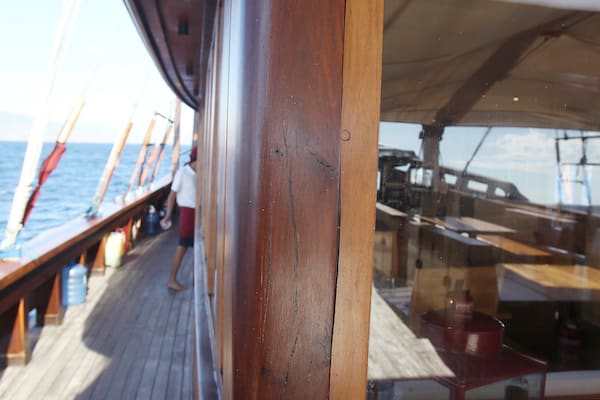
Warakaraket
First Dive: Karang Bayangan (aka Shadow Reef)
The bewitching Karang Bayangan is a hub of corals which include potato corals, soft corals, and brown leather corals. Black tip, white, and grey reef sharks are predominant here along with fusiliers, baby sharks, and jacks. In addition to these, parrot fish, oceanic triggerfish, octopus, and batfishes are all present in abundance, in fact, the number of fish is spectacular.
Second Dive: Boo West
A variety of marine creatures can be seen here such as grey reef sharks, napoleon wrasse, schools of pinnate batfish, unicornfish, blue dash fusiliers, yellow striped grunts and surgeonfish swarming around in large numbers, while less common sightings are banded sea kraits, ghost pipefish, leaf fish, and octopus lurking in the reefs.
Third Dive: Puri Pinnacle
This is a submerged reef that stands 23 feet below the surface. Its three pinnacles attract large schools of fusiliers, surgeon fish and hunting trevallies. It can offer some spectacular mobula ray action.
Snorkeling at Ranger Station Yuliet Besar
Here, you can snorkel among young black tip sharks swimming over the sand in the shallows.
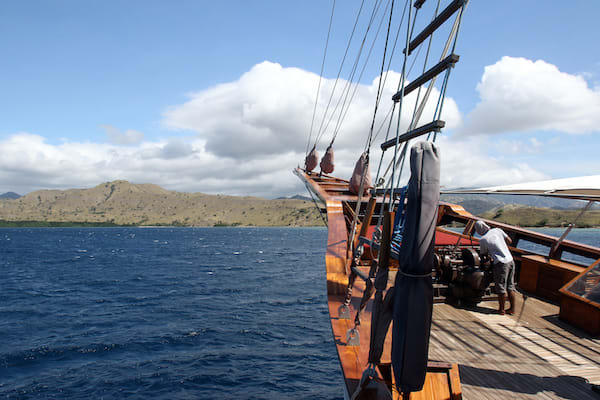
Boo
First Dive: Eagle’s Nest
This dive site offers superb visibility and impressive rock formations, abundant with schooling fish life and healthy reefs.
Second Dive: Boo Windows
One of Raja Ampat’s most iconic and most photographed dive sites, Boo Windows takes its name from the two swim-through holes in the rock. This dive site showcases the biodiversity of the Misool area with schooling fish, incredible corals and stunning underwater topography. The reef itself is thriving and healthy with plenty of soft and hard corals in a variety of awe-inspiring colors.
Third Dive: Boo East Point
This site is visited by the local reef manta population in season. Here the reef top is very shallow and perfect for watching the mantas being cleaned by small reef fish. Octopus can also be spotted around the rocky substrate.
Fourth Dive: Romeo
Many interesting macro subjects here, including pygmy seahorses, soft coral, decorator crabs, and many small commensal animals living with crinoids.
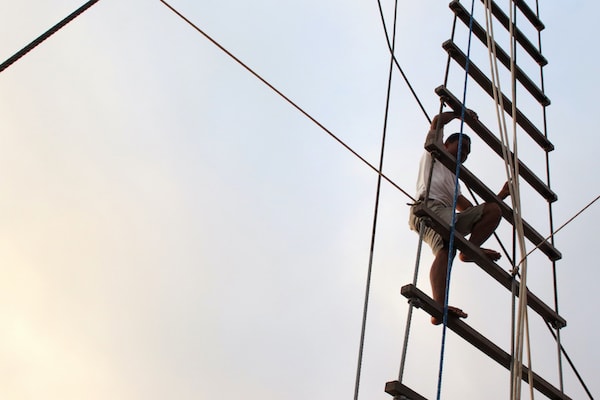
Daram
First Dive: Andiamo
Two small islands mark the site, but the typical dive starts at a small, submerged pinnacle teeming with fish life both large and small. You can then follow a deep ridge toward the two main islands of Andiamo while swimming past the resident group of yellowtail barracuda. Between the pinnacles is an impressive collection of soft corals and sea fans along with schools of damselfish and anthias. A long sloping ridge on the back side of the pinnacles is home to several large groupers.
Second Dive: Warna Bewarna (aka Candy Store)
Warna Berwarna means ‘colorful’ in Bahasa Indonesia and describes the abundant soft corals here, which are best experienced in the shallows.
Crossing to Sorong (around 12 hours)
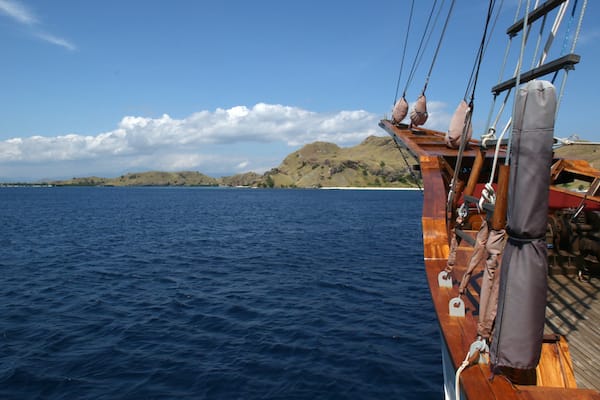
Disembarkation
Disembark at Sorong.
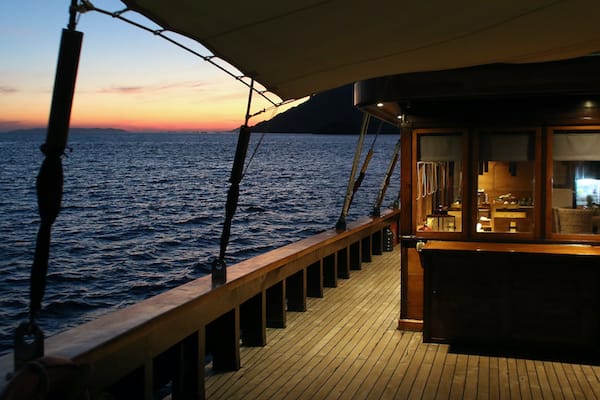
Accommodations
Social Areas
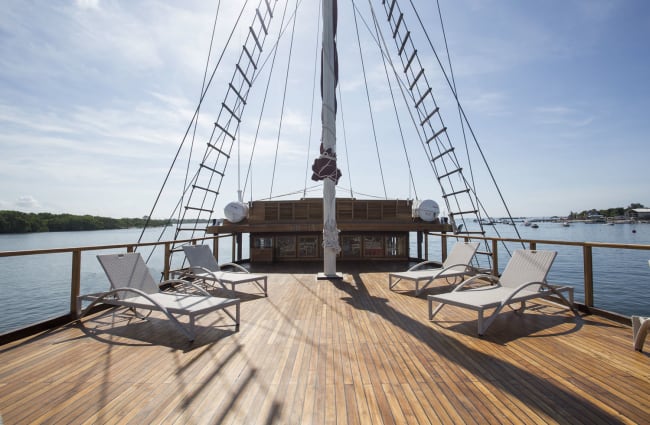
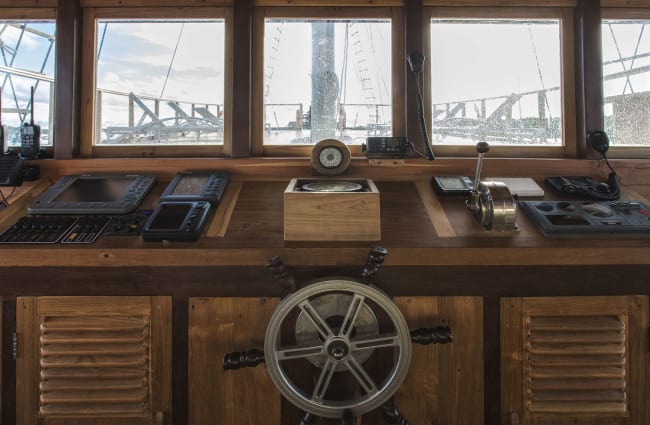
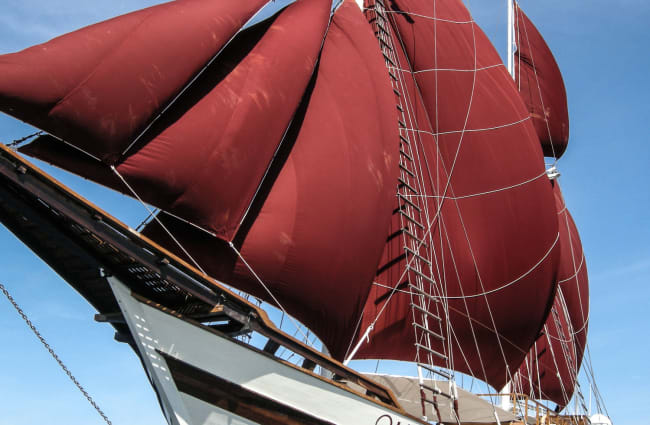

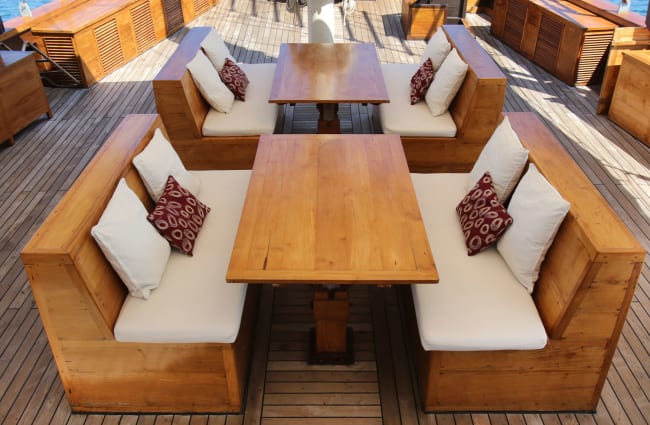

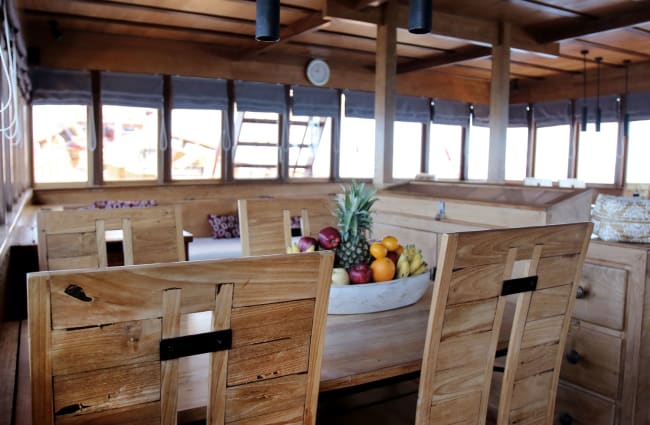

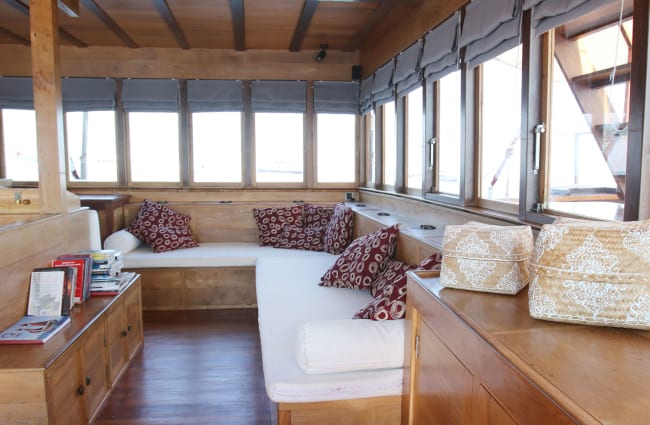

Suites & Cabins

Triple Cabin
This cabin is designed with relaxation in mind. The spacious room features under-the-bed storage for ease of movement in the room and is suitable for families or 3 friends traveling together. The cabins also feature a private ensuite bathroom accompanied by basic amenities for a relaxing shower.


Twin Cabin
This cabin is suitable for friends traveling together or single travelers wanting to share a cabin. The cabin also features a private ensuite bathroom accompanied by basic amenities for a relaxing shower.


Double Cabin
This cabin is suitable for couples to have a great quality time together. The cabin also features a private ensuite bathroom accompanied by basic amenities for a relaxing shower.
Related Cruises
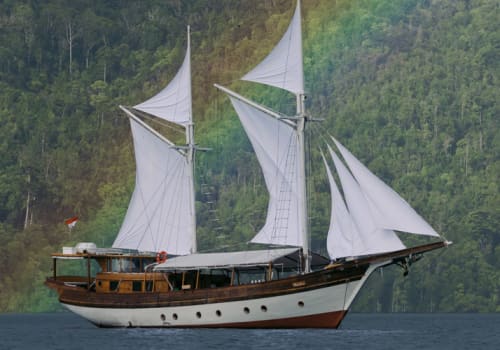
- Indonesia
Anne Bonny
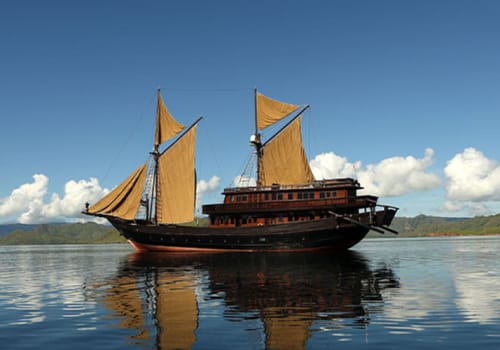
- Indonesia
Alila Purnama
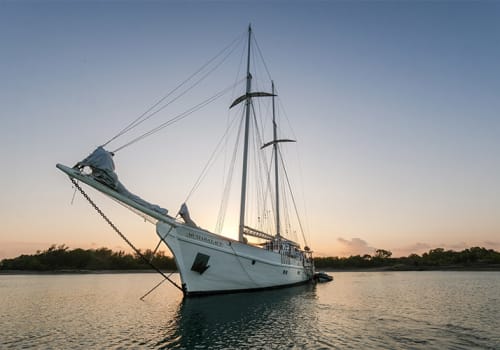
- Indonesia
Mutiara Laut
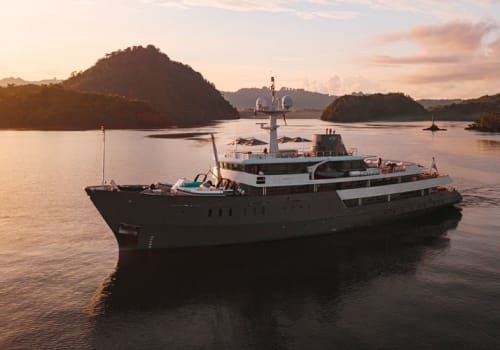
- Indonesia
Aqua Blu
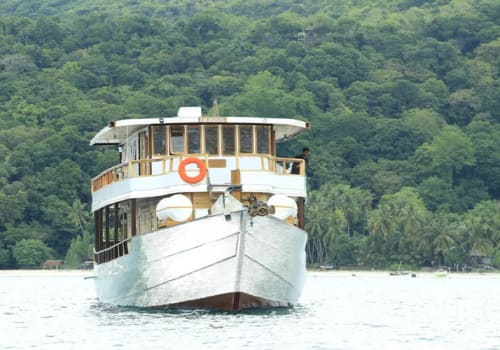
- Indonesia
Bajau

- Indonesia
Majik

- Indonesia
Ombak Putih
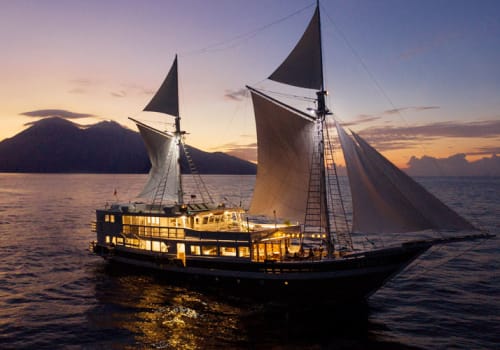
- Indonesia
Aliikai
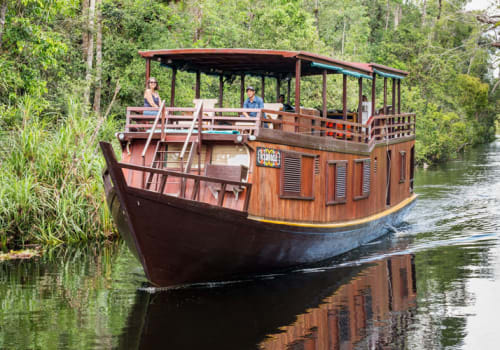
- Indonesia
Kumai
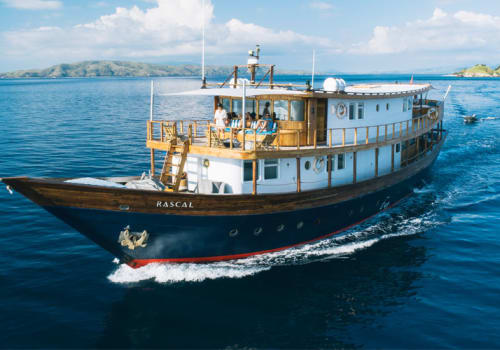
- Indonesia
Rascal
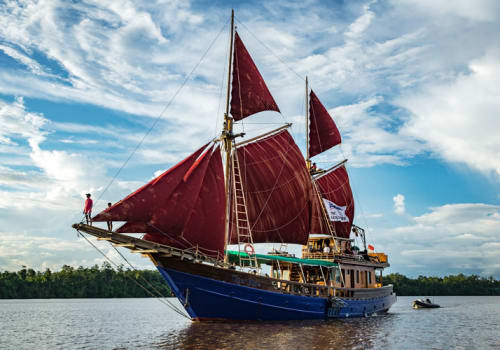
- Indonesia
Tiger Blue
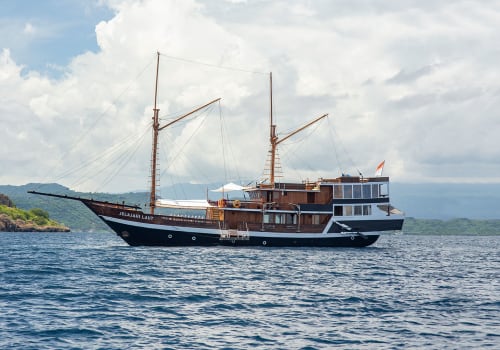
- Indonesia
Jelajahi Laut

- Indonesia

